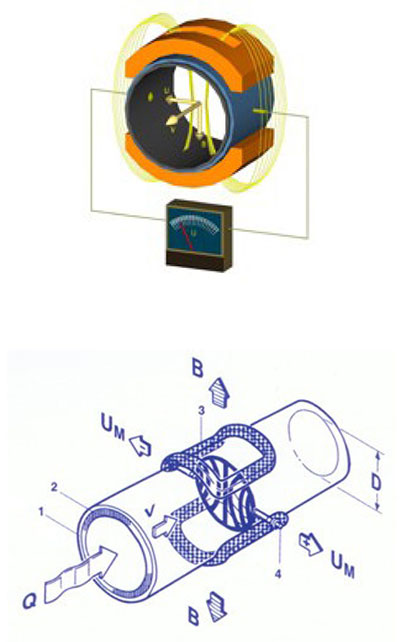Currently Empty: $0.00
What are Magmeters?

How they Work:
Magmeters go by many names: electromagnetic flow meters, magnetic flow meters, magnetic inductive flow meters, and magneto-inductive flow meters. They are by far one of the most popular flow measurement technologies in the world. As of 2020, one quarter of all flow meters sold are magmeters.
Magmeters operate according to Faraday’s law of magnetic induction where a current is induced into a conductor as it moves through a magnetic field. The amount of current is directly proportional to the velocity of the moving conductor.
Magmeters have many advantages, like no moving parts to wear, which makes them very reliable. Viscous and dirty liquids can also be measured with minimal accuracy degradation. They also offer low pressure loss and can be built with a variety of different materials to handle a variety of applications.

Conductive Liquids:
Conductive liquids are marked by the property of being able to conduct electricity. This is because there are positive and negatively charged ion particles that are free to move around. These ions enable the conductivity and the more ions there are, the higher the liquid’s conductivity will be. An increase in liquid temperature increases the activity in the ions and also increases the conductivity potential. It is typically measured in siemes per meter or centimeter.
Advantages:
- Design has no obstruction or restriction
- No moving parts to wear or break down
- Reduced maintenance costs
- Long service life
- Use with clean, sanitary, dirty, corrisive, or abrasive media
- Minimal straight run piping requirements
- Easy to install in compact spaces
- Accurate
- Low pressure drop, reduced piping costs
- Requires very little power to operate
- Can measure both low and high flow rates
- Can usually be bi-directional
- Mostly insensitive to viscosity, specific gravity, temperature, or pressure variations
Common Applications:
- Water, process water
- Wastewater, treated and untreated
- Custody Transfer
- Chemicals and corrosives
- Slurries from mining, pulp, minerals, etc.
- General industrial uses

Limitations:
- For conductive liquids only, > 5-20 uS/cm
- No mixed hydrocarbons or gases
- Can malfunction if near minimum viscosity
- Media cannot have magnetic materials
- Full pipe is necessary
Examples of Conductive Liquids:
- Acids, caustics, slurries
- Salty solutions
- Sulpheric or hydrochloric acid
- Vinegar and lemon juice
- Sodium or potassium hydroxide
- Copper sulfate
Examples of Non-conductive Liquids:
- Deionized, ultrapure, or distilled water
- Boiler feed water
- Hydrocarbons
- Oils or fats
- Alcohols
